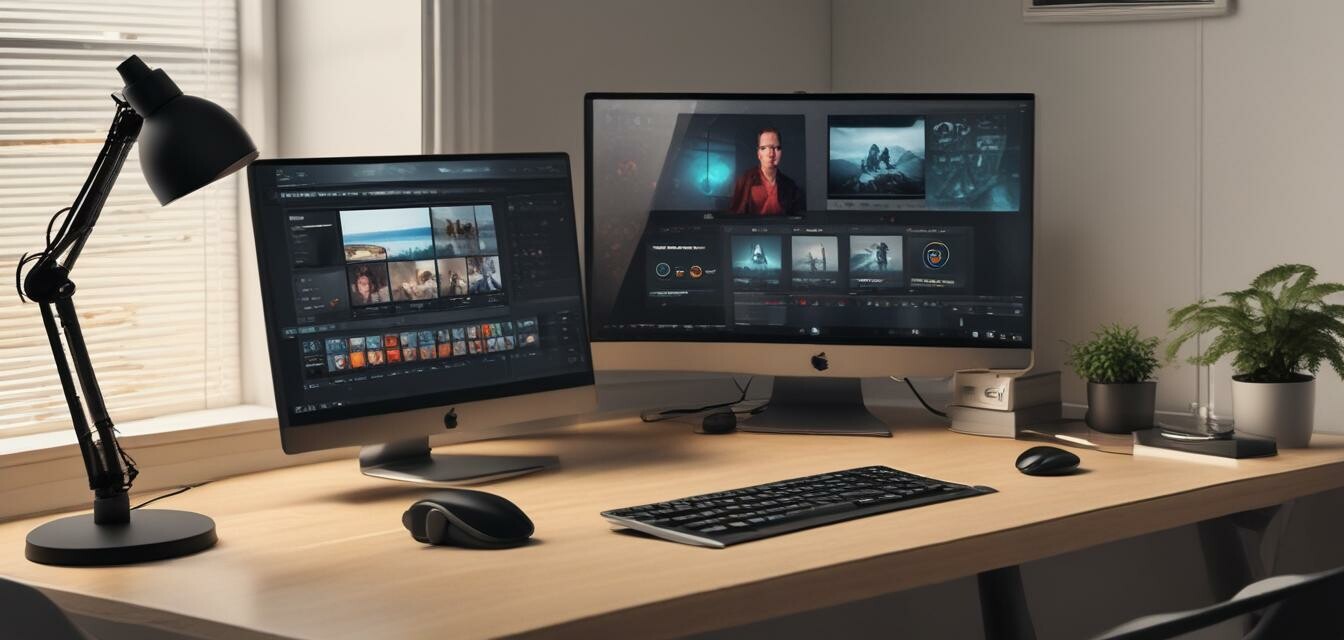
How to Improve Audio Quality in Video Calls
Key Takeaways
- Choose the right microphone for clarity.
- Use headphones to avoid echo and feedback.
- Optimize your environment for sound quality.
- Test your audio setup before important calls.
- Utilize software settings to enhance audio performance.
Video calls have become a significant part of our professional and personal lives. Whether you are working from home or catching up with friends, the quality of audio significantly affects the overall experience. Poor audio can lead to misunderstandings or frustration, making it essential to focus on improving audio quality. In this guide, we will discuss practical techniques and gadget recommendations to ensure crystal-clear sound during your video calls.
Why Audio Quality Matters
Good audio quality is vital for effective communication. It ensures that your words are heard clearly and helps avoid repetition and confusion. Whether you're giving a presentation or having a friendly chat, high-quality audio creates a more engaging atmosphere. Below are reasons why enhancing audio quality is crucial:
- Improves understanding and minimizes miscommunication.
- Enhances the overall professionalism of your calls.
- Reduces frustrations caused by background noise and echoes.
- Creates a pleasant experience for both you and your attendees.
Effective Techniques to Enhance Audio Quality
1. Choose the Right Microphone
The microphone is one of the most important gadgets for improving audio quality. Here are a few types you might consider:
| Microphone Type | Description | Pros | Cons |
|---|---|---|---|
| USB Microphone | Plugs directly into the computer. | Easy to use, high-quality sound. | Usually more expensive. |
| Lavalier Microphone | Clip-on mic for hands-free use. | Great for presentations, discreet. | May require adapters. |
| Headset Microphone | Integrated with headphones. | Good sound isolation, easy to use. | Can be uncomfortable for long periods. |
2. Use Headphones
Using headphones during video calls can not only improve sound quality but also eliminate background noise and echo. Consider the following:
- Opt for closed-back headphones to block outside noise.
- Wireless options can provide more freedom of movement.
- Make sure they have a built-in microphone for convenience.
3. Optimize Your Environment
Your surroundings play a crucial role in audio quality. Here are some tips to enhance your environment:
- Find a quiet room with minimal background noise.
- Avoid hard surfaces that can cause echoes.
- Consider using sound-absorbing materials like curtains or rugs.
4. Test Your Setup
Before any important video call, it's advisable to test your audio setup. Here's a quick checklist:
- Check that your microphone is plugged in and working.
- Adjust audio levels on your device.
- Conduct a quick test call to evaluate sound quality.
Gadget Recommendations for Optimal Audio
Investing in quality audio gadgets can make a significant difference in your video conferencing experience. Here’s a table to help you choose the right gadgets:
| Product Category | Recommended Features | Suggested Brands |
|---|---|---|
| Microphone | Cardioid pattern, USB connection | Brand A, Brand B |
| Headphones | Noise-canceling feature, good battery life | Brand C, Brand D |
| Webcam | 1080p resolution, built-in microphone | Brand E, Brand F |
Software Settings to Improve Audio
Many video conferencing applications offer settings to enhance audio quality. Here are some common options:
- Adjust bandwidth settings to optimize performance.
- Use noise suppression features when available.
- Enhance audio clarity by adjusting sound settings.
Conclusion
Improving audio quality in video calls may seem challenging, but with the right techniques and gadgets, it's entirely achievable. From selecting an appropriate microphone to optimizing your environment, each step contributes to a better calling experience. Remember to test your setup regularly and keep exploring the features of your chosen video conferencing software. By following these guidelines, you will be well on your way to confident and clear communication.
Tips for Beginners
- Start with basics: ensure your device is compatible with your audio gadgets.
- Don’t hesitate to ask for feedback on your audio quality from your calls.
- Keep your software updated for the best performance.
Pros
- Improved clarity in communication.
- Less background noise disruption.
- Professional audio setup enhances credibility.
Cons
- Initial investment in gadgets may be required.
- Learning curve for optimizing settings.
For more tips on using tech devices, check out our other articles on how-to guides, or explore audio gadgets for enhancing your setup!
